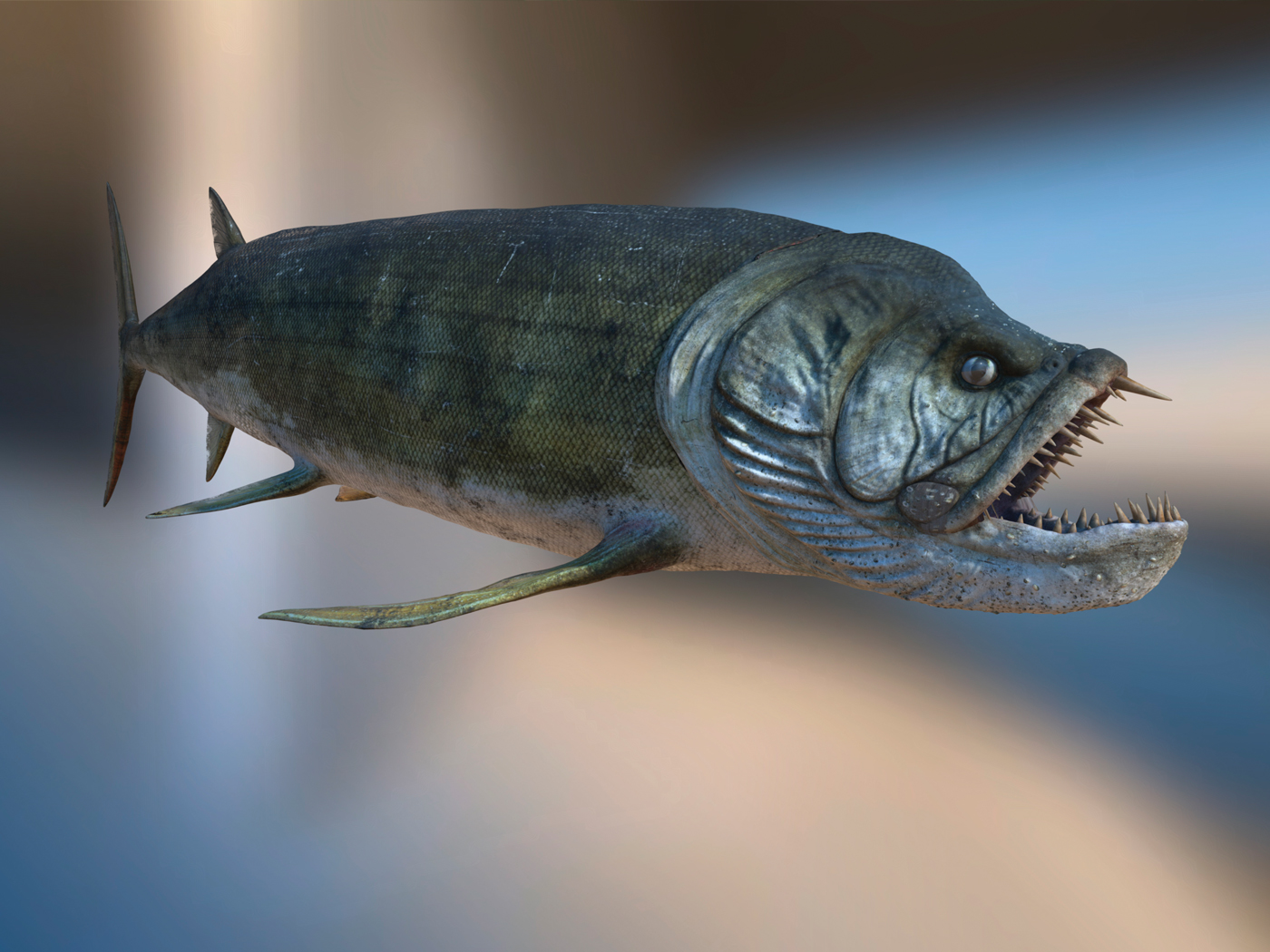It is clear that exploration for oil is an essential
activity in our modern world and that the search for new areas
of oil and gas accumulation would be aided by a better understanding
of the origin of petroleum. Many scientists recognize the
link between the origin of oil and exploration. As Baker and
Palmer point out:
Implicit in such (chemical) interest by both
the public and the entrepreneurs is the feeling that understanding
petrogenesis must eventually lead to more effective exploration.
1
Christians, in particular, should be concerned
about origins because the study of "beginnings"
always brings us back to God's history book, the Bible, for
resolution. The chemistry of oil strongly suggests that it
was formed rapidly from the remains of plant and animal matter.
Oil probably originates in sedimentary rocks which were originally
deposited by moving water. This is exactly what we would expect
from the year-long Flood of Noah's day. A very reasonable
model of petrogenesis can be based on the assumption that
most of the oil and gas deposits of our day date from the
worldwide Flood of about 2500 B.C., or about 1600 years after
Creation.
The classic problem faced by the petroleum industry,
since its U.S. inception by Drake in 1859, has always been
how to find underground traps of the oil by looking and experimenting
at the earth's surface. This is accomplished today by measuring
folds and faults (structural geology), studying the detailed
sequence of rocks in an area (stratigraphy), and testing using
artificial earthquake energy (seismic exploration). But how
did the oil and gas get into the trap? Most theories hold
that the petroleum moved through porous rock, perhaps over
great distances, to get to the final trapping area. This process
is termed migration. The rocks in which the oil and gas originated,
before migration, are called source rocks. 2 There
is disagreement as to whether the origin of hydrocarbons (both
oil and natural gas) in the source rocks was organic or inorganic.
Some workers maintain that the source of natural gas, especially,
must be deep within the earth, where igneous activity could
generate it inorganically. 3 From this deep source,
it could then migrate upward into sedimentary rocks. Proponents
of the organic theory, on the other hand, suggest that most
petroleum started out as plants and animals which were buried
in the source rocks and then chemically altered into crude
oil and gas. The chemistry of oil, therefore, holds one of
the keys to understanding how petroleum originates.
Petroleum is a complex mixture of organic compounds,
all of which provide clues to some aspect of its origin, burial
in sediments and chemical modification. A porphyrin is one
such chemical that is found in crude oil and also in plants
and blood. Interestingly, porphyrins break down rapidly in
the presence of oxygen or other oxidizing conditions. Geologists
often suggest that porphyrins are evidence for widespread
reducing environments during the deposition of petroleum source
rocks. However, this is not the best explanation for porphyrin
preservation. Rapid sedimentation would also cut off the porphyrins
from oxidizing agents and would allow their preservation as
components of crude oil. Since crude oil porphyrins are indicators
of rapid sedimentation, the details and context of these fascinating
chemicals provide yet another evidence for a worldwide, catastrophic
flood.
Porphyrins are structurally similar to both
chlorophyll and hemoglobin molecules. They are classified
as tetrapyrrole compounds and often contain metals such as
nickel and vanadium. 4 Porphyrins are broken apart
by two common geologic circumstances, oxidizing conditions
and high temperatures. As Russell 5 puts it:
Porphyrins are complex organic substances related
to chlorophyll and hemoglobin, which are destroyed by oxygen
and heat.
In our present world, the areas of high sedimentation
rates, 6 such as river deltas in coastal zones,
have oxidizing conditions. Therefore, uniformitarian geologists
have been forced to the point of view expressed by Levorsen
7 in one of the standard petroleum geology textbooks:
The origin of petroleum is within an anaerobic
and reducing environment. The presence of porphyrins in
some petroleums means that anaerobic conditions developed
early in the life of such petroleums, for chlorophyll derivatives,
such as the porphyrins, are easily and rapidly oxidized
and decomposed under aerobic conditions.
But Tissot and Welte 8 have suggested
another way that organic matter containing porphyrins can
be preserved:
The main reason for the higher preservation rate
in the Black Sea is probably the slower degradation of organic
matter in the absence of oxygen. Up to a certain point,
a high sedimentation rate can also help to preserve organic
material.
PREDICTIONS AND TESTS OF A FLOOD GEOLOGY MODEL
CONCERNING PORPHYRINS
If a "high sedimentation rate" will
preserve organic material, a catastrophic sedimentation rate,
such as we envision for the worldwide Flood, would uproot,
kill, and bury organic material so rapidly as to cut the porphyrins
off from oxidizing agents which would destroy them in the
ocean water. Under this model, flood geologists would predict
that porphyrins should be commonly found in sedimentary rocks.
This hypothesis can be tested in the published literature
of petroleum geochemistry. Consider the following conclusion
from Tissot and Welte: 9
Petroleum porphyrins . . . have been identified
in a sufficient number of sediments and crude oils to establish
a wide distribution of these geochemical fossils.
As to the percentages of these chemicals found
in crude oils, Tissot and Welte report that porphyrins vary
from traces to 400 ppm (.04%) 10 This is a small
amount, but one which experiments would predict even under
rapid burial and alteration conditions. DiNello and Chang
11 report the breakdown of a plant porphyrin in
about three days under an experimental procedure which reached
a temperature of 210 degrees C for about a 12-hour period.
As they conclude:
The yield of pure pyrrhoporphyrin is about .5
gm from 100 gm of crude chlorophyll extract.
In other words, they produced a .5% concentration
of a type of porphyrin found in oil from plant material in
one day. A crude oil porphyrin can be made from chlorophyll
(and presumably hemoglobin) in even less than 12 hours. Fuhrhop
and Smith found that 80% of the porphyrins in a sealed glass
tube were broken down when heated to 165 degrees C for four
hours in the presence of vanadium tetrachloride. 12
Our young earth, Flood geology, model requires that this geochemical
fossil, a porphyrin, be produced from starter chemicals very
rapidly. The research of DiNello and Chang, along with Fuhrhop
and Smith, shows that porphyrins can be produced from chlorophyll
in a matter of hours. This substantiates at least one important
aspect of this creationist model for the origin of petroleum.
I presented this "porphyrin argument"
in the pre-trial testimony phrase of the 1981 Arkansas Balanced
Treatment case as evidence that earth history has been dominated
by processes operating at a rate, scale, and intensity of
catastrophic proportions. 13 The Arkansas trial
has prompted many comments to the effect that creationism
is not science, including this editorial opinion from the
international science journal, Nature: 14
Many working scientists, finding that it (creationism)
does not help in ordering thought or designing experiments,
are tempted to dismiss it as rubbish.
Despite such propaganda, a Creation/Flood model
does open many new avenues of scientific thought. As a creationist
working on the origin of petroleum, the Flood geology model
actually opened up new thoughts to me, such as the explanation
of porphyrin preservation due to catastrophic sedimentation
rates rather than widespread reducing environments. Testable
hypotheses could be formulated and potentially falsified by
organic geochemistry. Flood geology provides an explanation
for the presence of porphyrins in crude oil, superior to the
standard evolutionary geologic thinking. The creationist viewpoint
actually opens up new research areas and experimental designs.
For example, note the structural similarity of the crude oil
porphyrin not only to chlorophyll but also heme, a component
of blood. Because of evolutionary bias, many petroleum geologists
think of crude oil forming from mostly plant material. While
more research needs to be done, it seems that crude oil porphyrins
could, just as well, be the decayed remains of blood. Is it
possible that the chemistry of petroleum could contain trace
biochemical markers of vertebrate animal and even ancient,
antediluvian human blood? In conclusion, Flood geology provides
a consistent explanation for the presence of porphyrins in
crude oil, and also opens up new research possibilities in
the strategic field of petroleum geology.
1 Baker, E., E.W. and Palmer, S.E.,
1978, "Geochemistry of Porphyrins," in David Dolphin,
ed., The Porphyrins (vol. 1: Structure and Synthesis,
Part A): New York, Academic Press, p. 545.
2 Levorsen, A.I., 1967, Geology of Petroleum
(Second Edition): San Francisco, W.H. Freeman and Company,
pp. 3-31.
3 Gold, T. and Soter, S., 1980, "The deep-earth
gas hypothesis:" Scientific American, v. 242,
n. 6, pp. 154-161.
4 Tissot, B.P. and Welte, D.H., 1984, Petroleum
Formation and Occurrence, (Second Edition): Berlin,
Springer-Verlag, pp. 409, 410.
5 Russell, W.L., 1960, Principles of Petroleum
Geology (Second Edition): New York; McGraw-Hill Book
Company, Inc., p. 25.
6 Walker, K.R., et. al., 1983, "A model
for carbonate to terrigenous clastic sequences:" Geologic
Society of America Bulletin, v. 94, pp. 700-712.
7 Levorsen, op. cit., p. 502.
8 Tissot and Welte, op. cit., p. 12.
9 Ibid., p. 128.
10 Ibid., p. 410.
11 DiNello, R.K. and Chang, C.K., 1978, "Isolation
and Modification of Natural Porphyrins," in Dolphin,
op. cit., p. 328.
12 Fuhrhop, J.H. and Smith, K.M. (Compilers),
1975, Laboratory Methods in Porphyrin and Metalloporphyrin
Research: Amsterdam, Elsevier, p. 42.
13 U.S. District Courts, Arkansas, 1981, Oral
deposition of David Ralph McQueen: Atlanta, Bull &
Associates, 194 pp.
14 Nature, 1981, "Tolerance but no quarter
for creationism," vol. 4, 3 Dec 1981, p. 389.
*Mr. McQueen is Assistant Professor
of Geology at the ICR Graduate School. He earned his Master's
degree in Geology from the University of Michigan while
a National Science Foundation Graduate Fellow.






